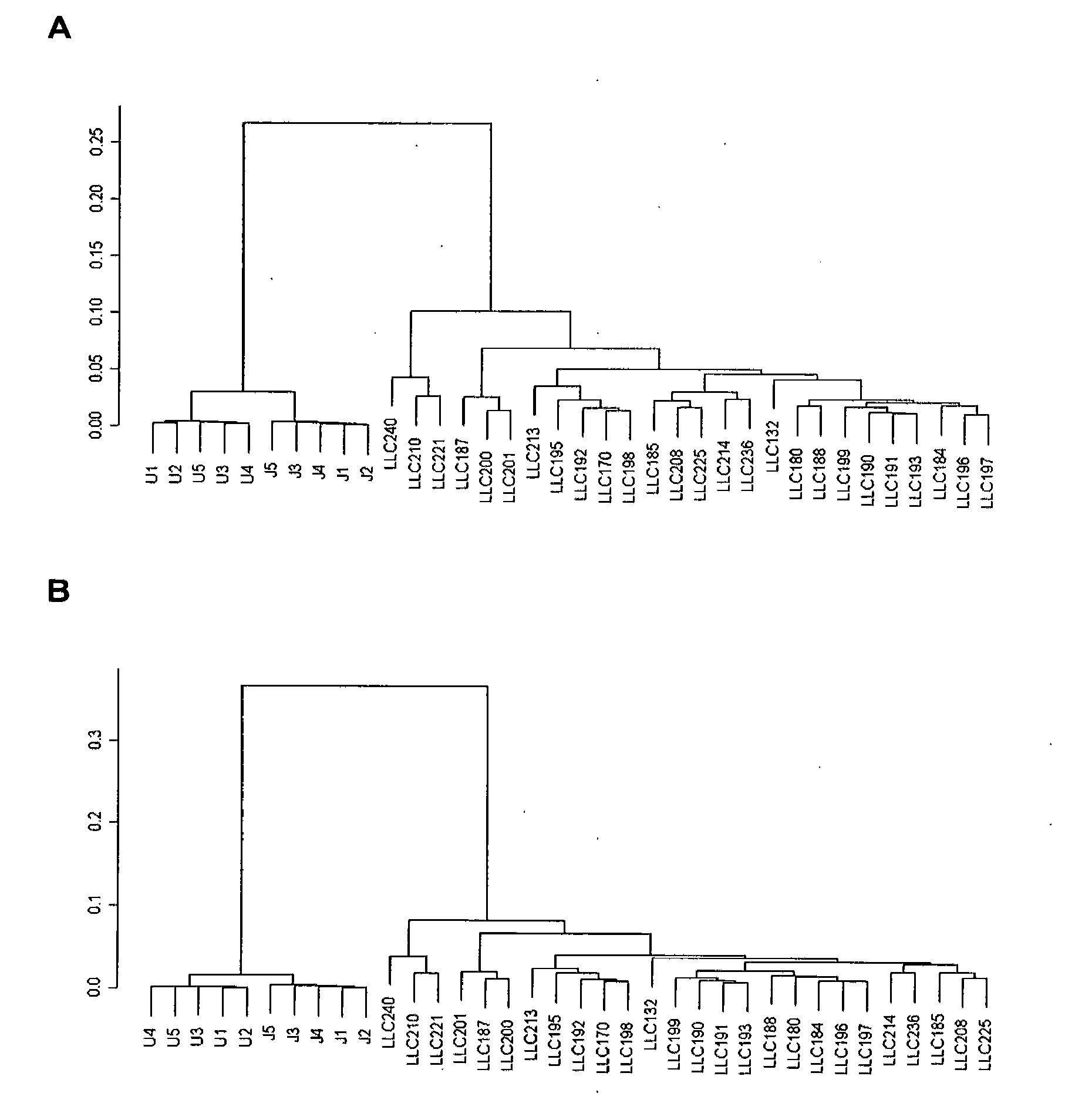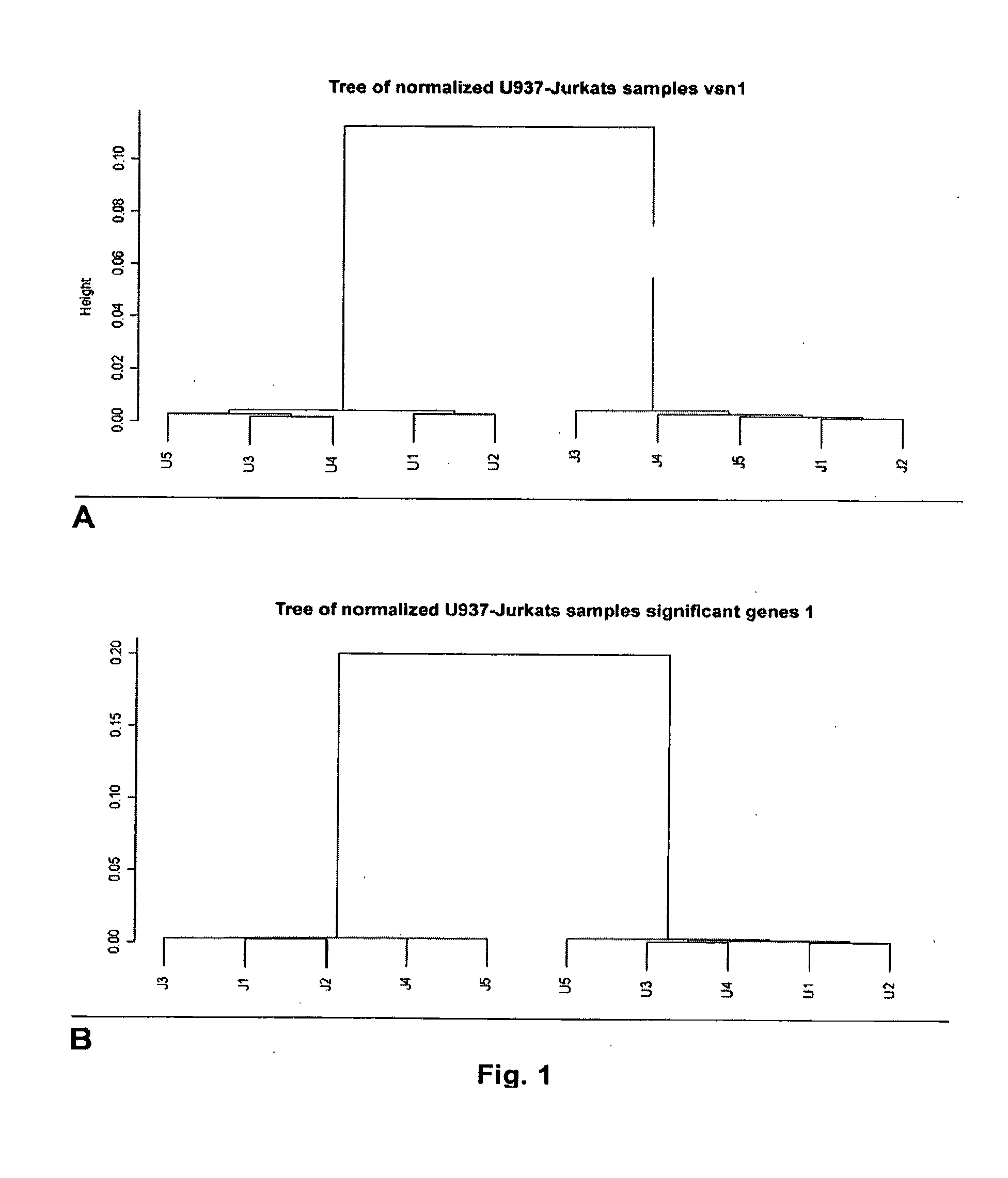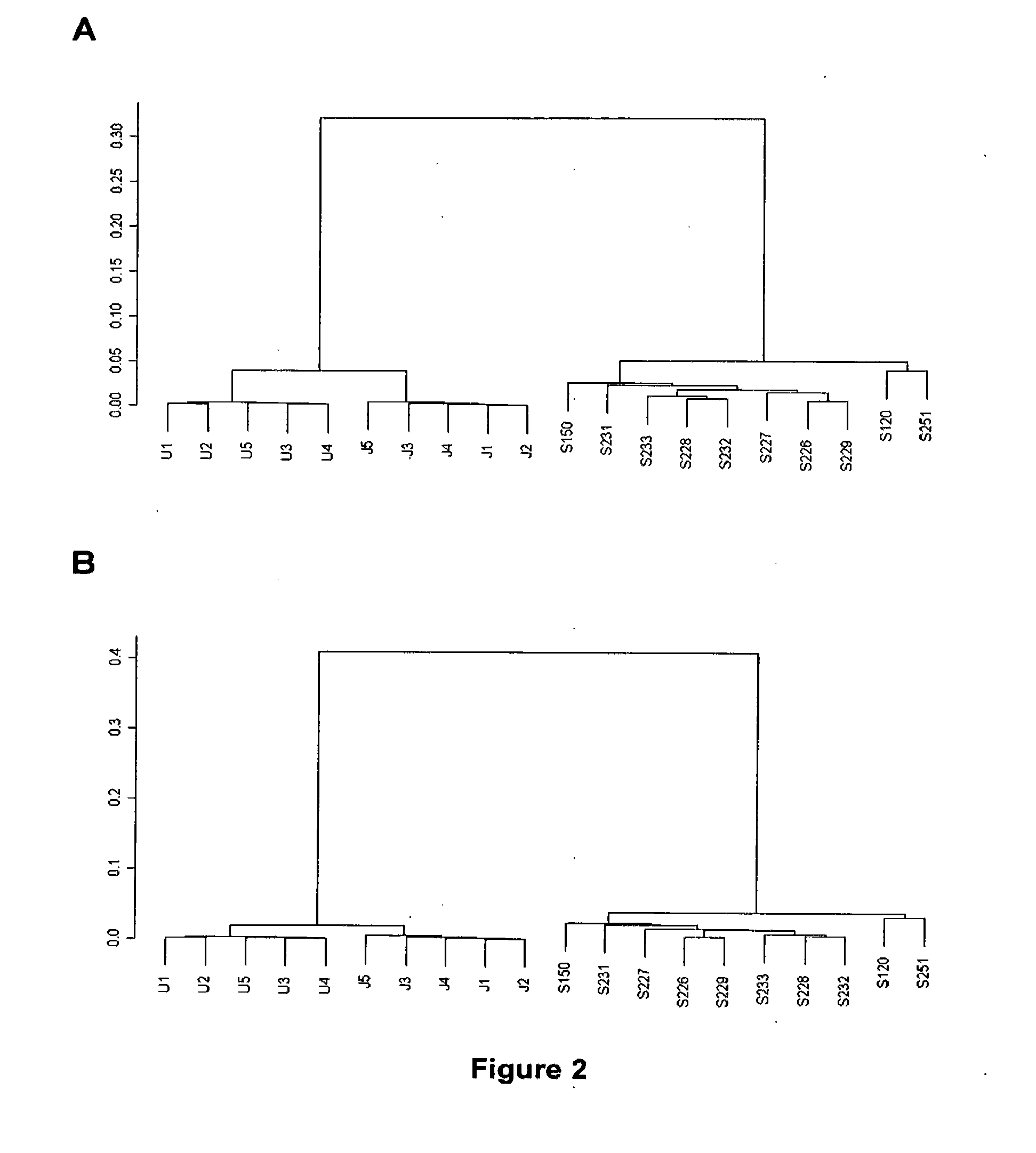Method and Device for the in Vitro Analysis for MRNA of Genes Involved in Haematological Neoplasias
- Summary
- Abstract
- Description
- Claims
- Application Information
AI Technical Summary
Benefits of technology
Problems solved by technology
Method used
Image
Examples
example 1
Results Obtained on Using the Microarray Device with Samples of U937 Vs Jurkat Cells
[0206]In order to know if the device permits differentiating two cells lines hybridized in 10 microchips: 5 samples of biotinylated cRNAs synthesized following the optimized working protocol, obtained from RNA of U937 cells (cell line from promonocytic leukemia) and 5 samples of biotinylated cRNAs obtained from RNA of Jurkat cells (cell line from T Leukemia).
[0207]The initial steps of preliminary processing of the data and validation of the hybridization mentioned previously in the “Data analysis: Preliminary processing” section were carried out and then the data was normalized and filtered:[0208]Data normalization. The “variance stabilization normalization” method was used, available in the “vsn” package in R. There are different packages available on the Internet for R, with special statistical functions or which permit the access and processing of data and are available for downloading from CRAN (...
example 2
Results Obtained on Using the “Array” Device with Samples from Healthy Subjects Vs U937 and Jurkat Cells
[0223]The expression of 5 samples of U937 cells and 5 samples of Jurkat cells was compared with the expression of 10 samples from total blood from healthy subjects. In a manner similar to that carried out in Example 1, the initial data processing steps, validation of the hybridizations, normalization and filtering were carried out. A total of 180 genes passed the filtering processes. The non-supervised grouping of the samples (carried out with the hclust function of the stats package of R applying Pearson's correlation) in accordance with the expression of the 180 genes, provided a tree with two main branches: one branch contains all the samples from cell cultures and the other branch contains all the samples from total blood from healthy subjects, which demonstrates that the tool is capable of finding expression differences. The tree obtained after making this non-supervised grou...
example 3
Results Obtained with Samples from Patients with Chronic Lymphatic Leukemia (CLL) Vs U937 and Jurkat Cells
[0226]The expression profiles were compared of samples from U937 and Jurkats cell cultures with 26 samples from total blood of subjects with CLL.
[0227]The samples underwent preliminary processing of the data, they were normalized and filtered in a manner analogous to those used in Examples 1 and 2 and a total of 236 probes passed through the filters. The non-supervised grouping of the samples in accordance with the expression of the probes which passed through the filters showed a tree with two main branches: one which contained the samples of cell cultures and the other the CLL samples. Said tree is shown in part A of FIG. 3.
[0228]The maxT test (p<0.001) to find genes with statistically significant differences between the two groups of samples was carried out. This analysis provided a list of 120 probes. They are the following: SG2, SG4, SG8, SG10, SG13, SG15, SG16, SG19, SG20,...
PUM
| Property | Measurement | Unit |
|---|---|---|
| Volume | aaaaa | aaaaa |
| Molar density | aaaaa | aaaaa |
| Molar density | aaaaa | aaaaa |
Abstract
Description
Claims
Application Information
 Login to View More
Login to View More - R&D
- Intellectual Property
- Life Sciences
- Materials
- Tech Scout
- Unparalleled Data Quality
- Higher Quality Content
- 60% Fewer Hallucinations
Browse by: Latest US Patents, China's latest patents, Technical Efficacy Thesaurus, Application Domain, Technology Topic, Popular Technical Reports.
© 2025 PatSnap. All rights reserved.Legal|Privacy policy|Modern Slavery Act Transparency Statement|Sitemap|About US| Contact US: help@patsnap.com



